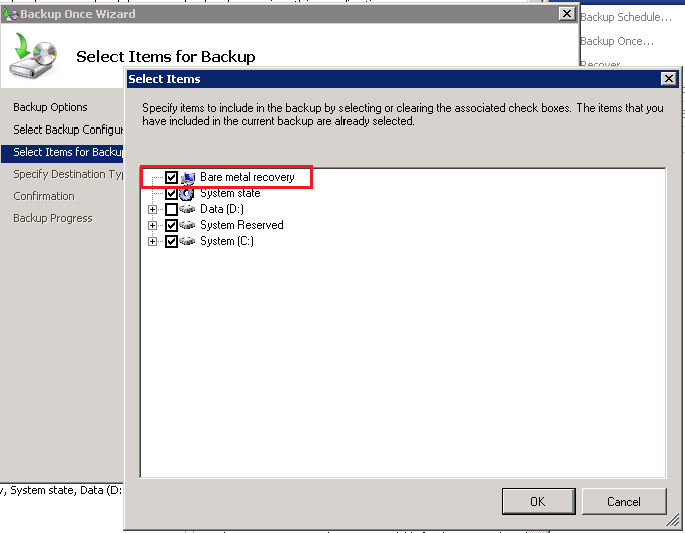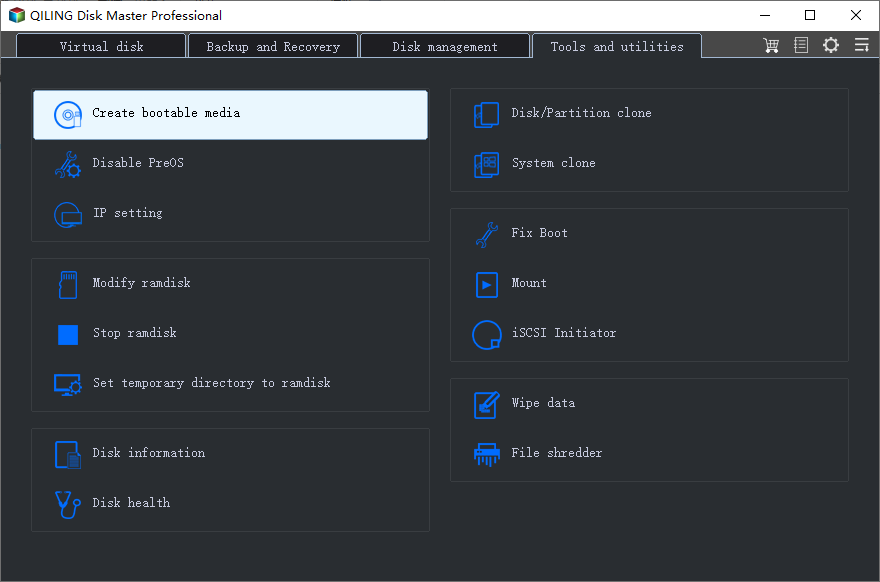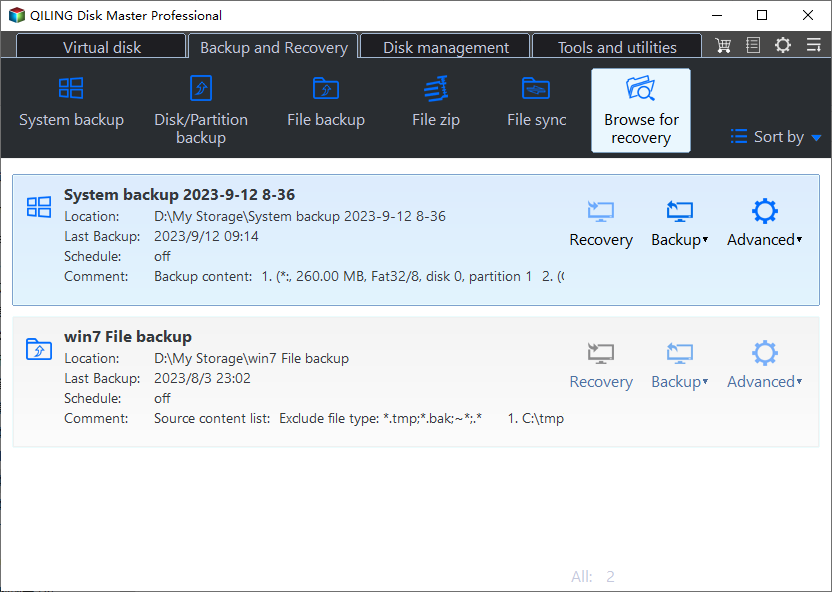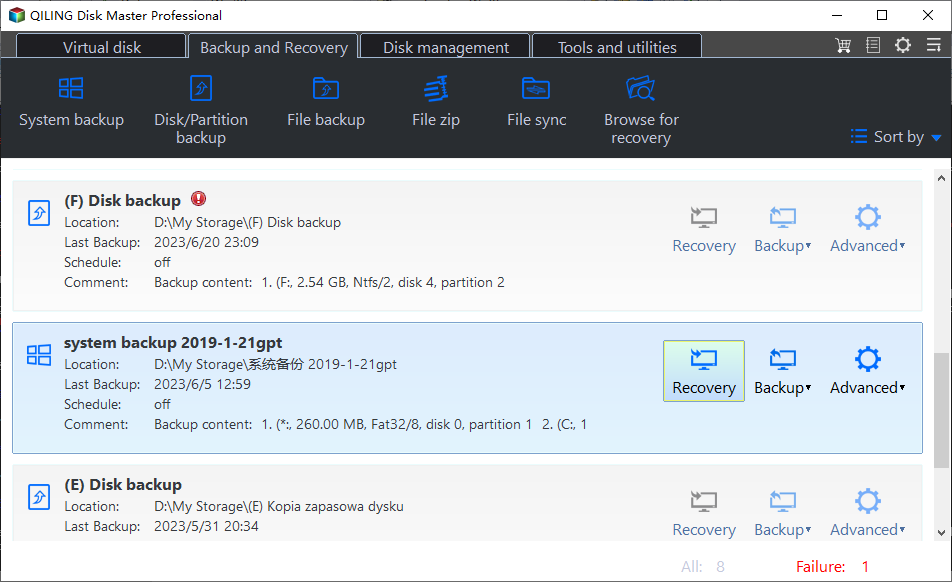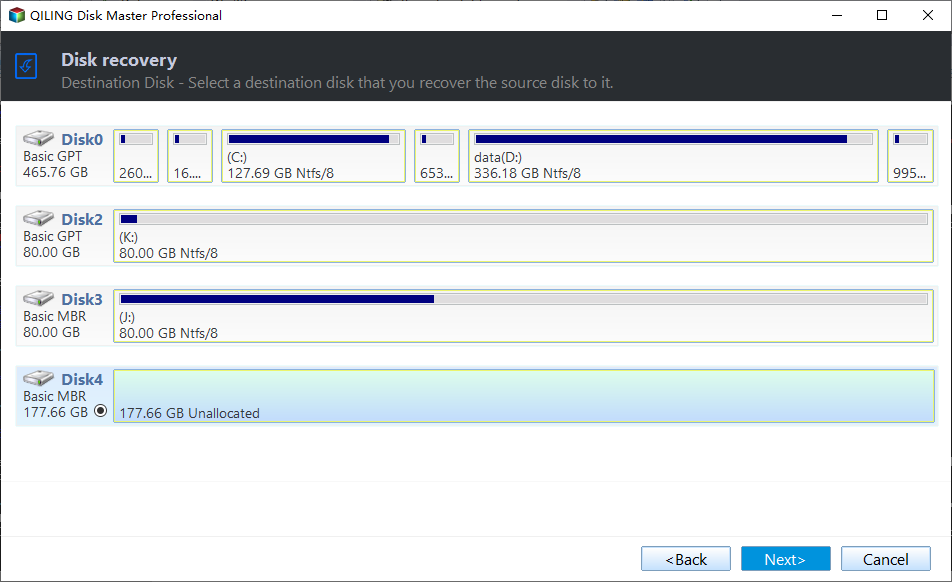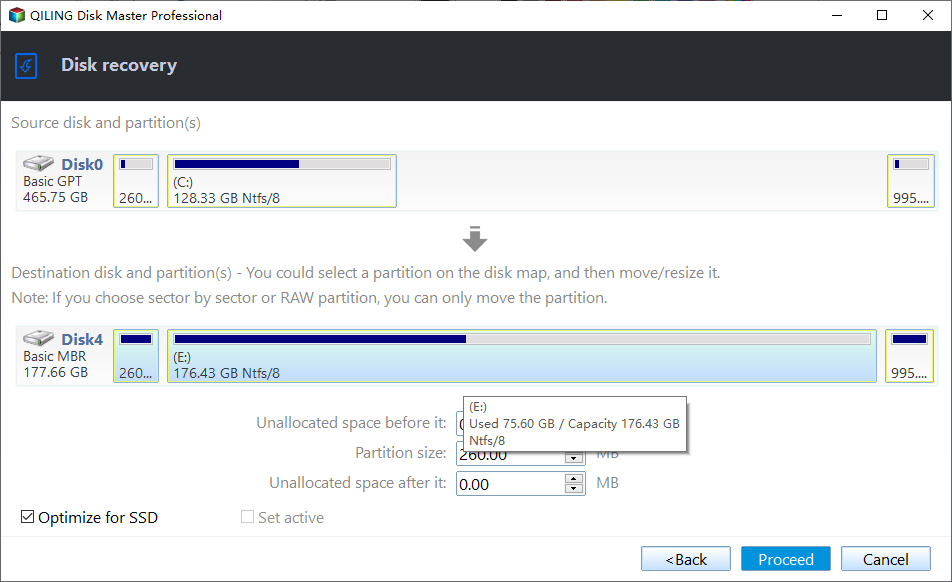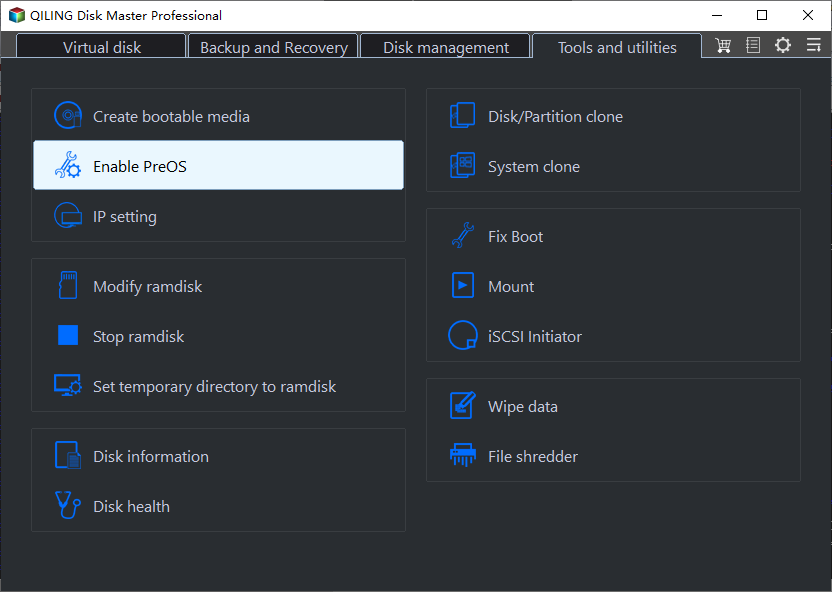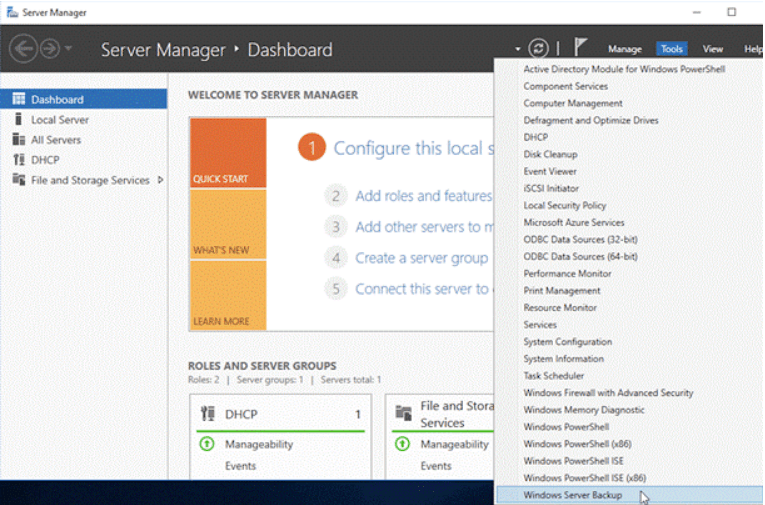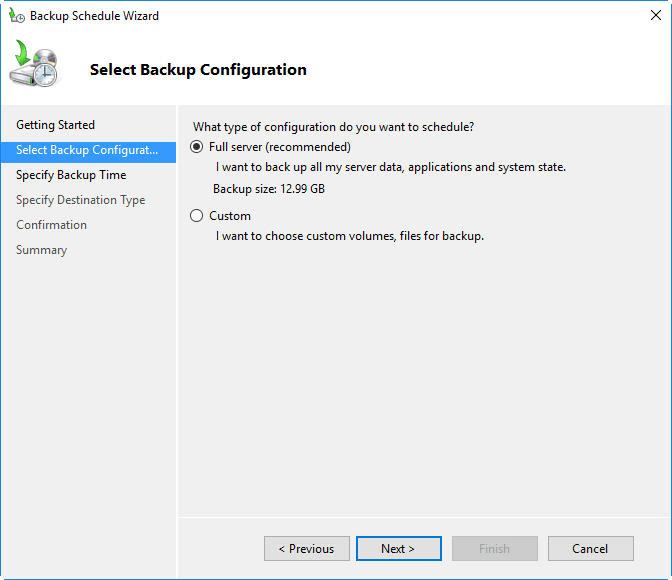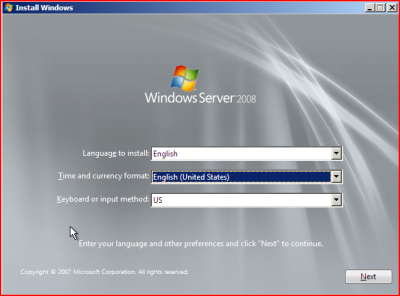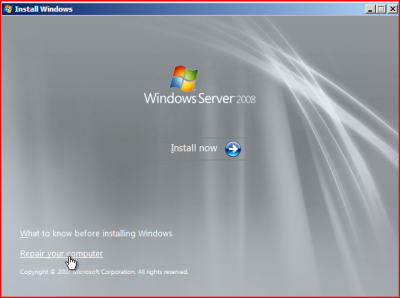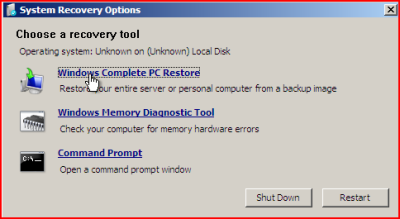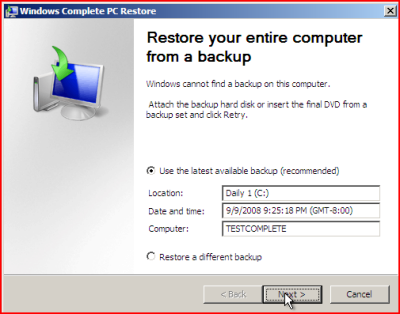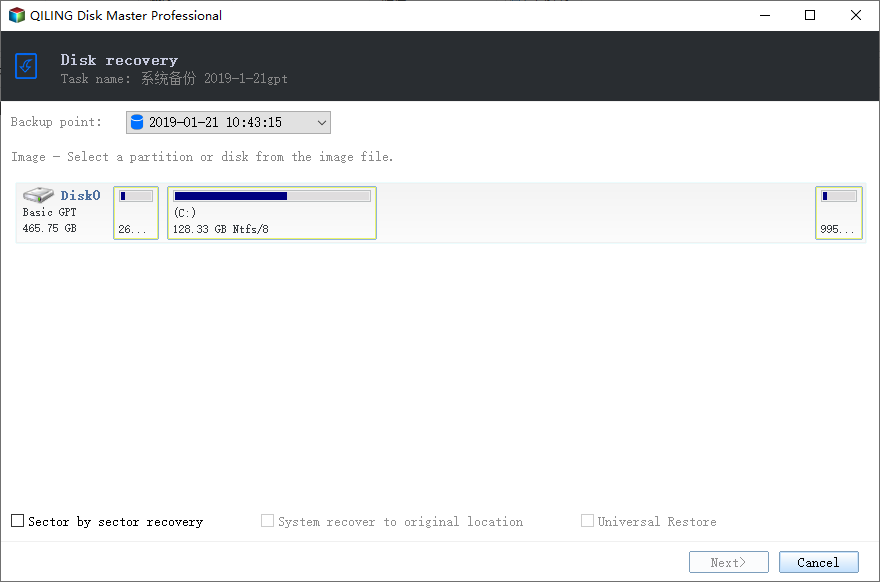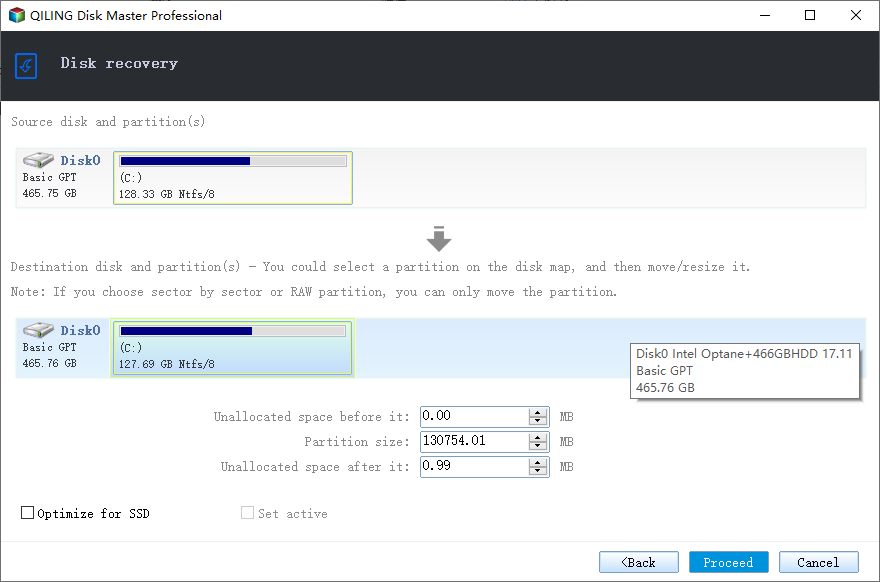Windows Server Backup Bare Metal Recovery to Different Hardware
What is bare metal recovery in Windows Server Backup?
Bare metal recovery (BMR) is a restoration process that enables you to restore a Server without any requirement of previously installed software and OS. It requires you to make a complete bare metal backup first, which includes the OS, drivers, programs, information structures, and other important data.
In Windows Server Backup, there is already an option called "Bare metal recovery" that allows you to back up OS files and all data except user data on critical volumes. With it, you can recover everything on the machine in case it won't start. The problem is, can you use a Windows Server backup to perform bare metal recovery to another machine with dissimilar hardware, or migrate OS to virtual machine?
Scenario: Can Windows Server Backup restore to different hardware?
Hello, I am planning to perform a bare metal backup for my Active Directory infrastructure. Using bare metal backup I heard from MS article we can restore the backup to dissimilar Hardware. Wondering how could I complete the restore.
Bare metal backup is common data protection means on Windows Server, and you can try it to protect Active Directory infrastructure or other workloads. However, according to Microsoft, this kind of backup can only be guaranteed to recover the same physical machine, or a different physical computer that has the same make, model, and configuration (identical hardware).
Although there's an MS article stating that you can do a different machine AD forest recovery by full server backup, it is highly likely to go wrong in real situations. Therefore, if you want to do a bare metal recovery to a machine with different hardware, it is recommended to use a professional tool that supports universal restore function.
If you want to do a bare metal restore to the same machine or a physical machine with identical hardware, then you can just use the built-in Windows Server Backup and System Image Recovery.
I will cover both in the following article:
- Bare metal restore Windows Server backup to different hardware securely
- Bare metal backup and restore Windows Server with built-in tool
Bare metal restore Windows Server backup to different hardware securely
When you use WSB to perform bare metal recovery, it can hardly restore system image to a smaller disk. And when the target machine has different firmware, you may receive system image restore fails because of UEFI/BIOS and suchlike errors.
But with Qiling Disk Master Server, things may be different.
- It enables you to create a complete system or disk image very easily, and bare metal restore it to even smaller disk with the intelligent-sector technology.
- With the specialized Universal Restore feature, you can also bare metal restore Windows Server to dissimilar hardware without boot issues.
- It includes a tool to help you create a recovery disk that can be used on any Windows computer for disaster recovery.
- It supports Windows Server 2003, 2008, 2011, 2012, 2016, 2019, 2022 (including R2), Windows SBS 2003, 2008, 2011 and Windows 11, 10, 8.1, 8, 7, Vista, XP.
Download the 30-day free trial to give it a try:
Steps to Windows Server backup restore bare metal to different hardware
Here I will show you the entire process step by step:
1. Launch the software, go to Backup tab and choose System Backup to create a system image on your Windows Server. Or, you can choose Disk Backup to create a disk image for a full server backup.
2. Go to Tools tab and use Create Bootable Media to create a bootable USB or disc that can boot the target machine into WinPE regardless of the OS version.
3. Connect the bootable media to your target machine and boot from it. If you have saved the backup image on an external drive, connect the drive as well.
4. After loading the main interface of Qiling Disk Master automatically, click Restore and Select Image File to locate the backup image you created before.
5. In the Image Information page, select Restore this system backup and then tick Restore system to other location in the bottom.
6. Specify the destination location to receive the server bare metal backup, and then click Next to continue.
7. Preview the operation. The Universal Restore option should be checked by default when it detects the new computer has different hardware. Click Proceed to start Windows Server bare metal recovery.
✬ Tips:
>> If your target disk is an SSD disk, tick "SSD Alignment" to further accelerate the reading and writing speed of it.
>> If you want to move system to a server with the same hardware (or another disk on the same server), you could clone system with "System Clone" or clone hard drive with "Disk Clone". After cloning, you can directly install the drive on new server and boot from it without the restoring step.
By the time this process is over, you can enjoy Windows Server on the new machine. It is quite simple and less prone to errors, making it suitable for all level of computer users.
Additionally, you can create a recovery environment and system image on the new server ahead of time. With a recovery environment tool, you can directly access Windows recovery environment and then restore Windows system image to new hard drive or restore your computer in the event of a system crash. The recovery environment created by Qiling Disk Master is kept under the path C:\Qiling Recovery. If your C drive is wiped or damaged, please create a bootable media with Qiling Disk Master and then boot your PC to restore your image under WinPE.
If you'd like to perform bare metal recovery on a large scale, you could consider Qiling Disk Master Technician Plus, which can help you deploy system to multiple computers in a company simultaneously, and offers unlimited billable technical services. In addition, you can copy installation directory for portable version creation.
Bare metal backup and restore Windows Server with built-in tool
In this section, I'll walk you through the preparations and detailed steps required to perform a bare metal recovery with built-in functions (Windows Server Backup and System Image Recovery).
Preparations for bare metal recovery
◉ Create a bare metal backup of Windows Server
Windows Server Backup (WSB) was first introduced in Windows Server 2008 and inherited in 2008 (R2), 2012 (R2), 2016, 2019, 2022, etc. To use Windows Server Backup to perform bare metal recovery, you need to install the backup tool from Server Manager first, and then choose Backup Schedule or Backup Once to get started.
When creating the Windows Server bare metal backup with WSB (Windows Server Backup), you need to select "Full server" in Select Backup Configuration, or select "Customize" -> "Bare metal recovery".
✬ Tip: Full server backup is anything in your system, and Bare metal backup is anything that is needed for your system's OS and its apps. Bare metal backup is included in Full server backup.
Follow the on-screen instructions to select backup time, detination, etc. and complete the backup, then you've got a Windows Server bare metal backup in hand.
◉ Prepare a recovery disk or installation disk
To perform bare metal recovery, you need a Windows Server recovery disk or installation disc of corresponding OS to access Windows Recovery Environment. For example, if you want to restore Windows Server 2012, the recovery disk must be made in Windows Server 2012.
✬ Note: if the target machine has no system, you need to use Windows installation disk because system repair disc or recovery drive won’t work on non-system computers.
◉ Make sure the destination hard drive to receive the bare metal recovery has enough disk space
If you want to restore to a new machine, the new hard drive needs to be in the same size or larger than the source disk that was backed up regardless of the size of the data.
◉ The target computer should have the same boot mode (Legacy/UEFI) as the source computer
Otherwise, you will likely receive errors during restoration. You can boot into BIOS to ensure the boot mode is the same, or manually reconfigure it. If you change the boot mode, remember to convert disk into the corresponding partition style.
Step-by-step to perform bare metal recovery in Windows Server
With these things prepared, you can follow the steps below to restore your Windows Server bare metal. This method is based on Windows Server 2008, but also applied to 2012, 2016, 2019 and 2022 including R2. Some details on entering the recovery environment may be different.
1. Insert the Windows Server installation disc on your new server (here is server 2008) and boot from it. Select the language and keyboard, and then click “Next”.
2. In the next screen, click “Repair your computer” instead of “Install now”. Then, select the operating system that you want to repair and click “Next”.
3. All the recovery options will be listed here. If you prefer to use the command line, you can select “Command Prompt” to perform Wbadmin bare metal recovery. Otherwise, select “Windows Complete PC Restore” to perform Windows Server Backup restore.
✬ Note: If the Windows Server bare metal backup is created on 2012 or later version, the recovery tool in the Windows recovery environment will be "System Image Recovery" rather than "Windows Complete PC Restore". Just select it and then choose bare matal backup to be restored.
4. In the next screen, select the BMR backup image to be restored and click “Next”. If the image is saved on an external hard drive, you should connect the drive to your new server.
5. After specifying the backup version, click “Finish” to start the bare metal restore. This might take a while depending on how much data to be restored.
When the process is complete, you should be able to boot your OS on the recovered machine. However, it may fail when the destination disk is smaller than the source disk in capacity. Also, it is a little bit complicated for common users. A user who has less server knowledge may make mistakes during the process.
Another way to create Window Server bare metal recovery partition
There is another way to achieve the purpose of protecting Windows Server. To be specific, you create a bootable recovery partition on your new server (or current running server). When the system crashes due to unexpected errors, you can boot into the recovery partition and run a system restore in order to making workloads or business back to normal as soon as possible.
Qiling Disk Master supports creating bootable recovery partition as well as system images of current state on Windows Server 2022, 2019, 2016, 2012 (R2), etc. in 1-click. And it allows you to enable boot option of this software or set quick recovery key "F11" or "A" to access this software and restore from disaster quickly. You may want to download it and have a try. In addition, it still has a user-friendly interface that makes the steps easily understood.
Here is brief guide on how to use Qiling Disk Master to recover a system image state. Make sure you've created a recovery partition before. You may refer to the steps on how to make a bootable recovery partition for creation if necessary.
1. Load Qiling OneKey Recovery from Windows PE. Choose one method to do this:
- Press F11 or A at startup to launch Qiling Disk Master.
- Directly choose “Qiling Disk Master” in the Windows boot menu to launch it.
2. When Qiling OneKey Recovery is loaded, you'll be asked, "Do you need to restore your system?" Click "Yes" to continue.
3. Click OneKey System Recovery and then select "Restore system by using the image file in Qiling Disk Master Partition".
✬ Tip: If you create recovery partition on new hard drive, please choose "Restore system by selecting a system image file" for bare metal restore.
4. Confirm the destination partition(s) to receive the bare metal server backup image and click "Proceed" to perform bare metal recovery in server 2008.
5. Wait for the recovery process to complete and click "Finish". Exit Qiling Disk Master and your server should start normally.
Summary
That's all for how to perform Windows Server Backup bare metal recovery on Server OS. You could use built-in tool -- Windows Server Backup, or the third-party server backup and restore software - Qiling Disk Master Server. The latter is easier for all level users, and it also allows you to restore Windows Server to virtual machine.
Another way to of data protection is also introduced, namely Windows Server bootable recovery partition, which allows you to restore the system state with one click. If you create the partition on a new server, it has the same effect as server factory reset.
Related Articles
- How to Clone a Physical Server to a New Drive or VMware
- How to Create System State Backup for Windows Server 2016
- Bare Metal Recovery | Complete BMR Guide in Windows 10 and Server
- How to Backup a NAS Server in Windows 11, 10, 8, 7
Storing data on a NAS server is a very popular way, and in order to make sure the data safe, you'd better backup NAS server to another place. Learn how to backup a NAS for you.
